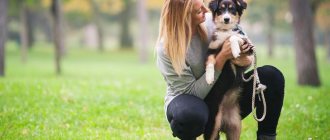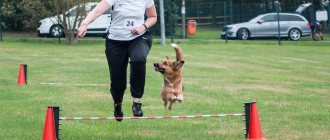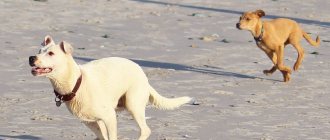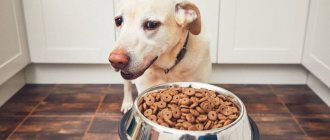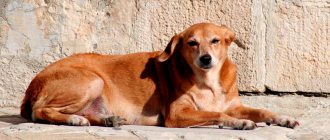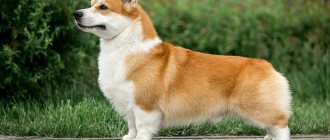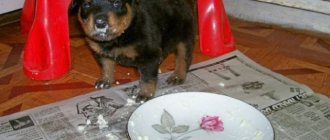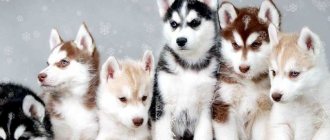Many people dream of having a four-legged pet, but simply hate regular walks. Dogs, which practically do not need to be walked with due to the peculiarities of their appearance and character, become a salvation for such owners.
Representatives of unpretentious breeds are also distinguished by their friendly and calm disposition, which is why pensioners and people with disabilities often get them. If you are looking for such a pet, then be sure to get acquainted with all the animals discussed below.
To whom?
Any dog is a responsibility, therefore, if you have no desire to take care of an animal, care for it and spend your time on it, it is better to abandon the idea of purchasing one. But even if a person is ready to give the dog his love and attention, problems may arise with walks:
- for busy people . Many people have such a work schedule that you can’t take your dog for a walk. But the desire for love does not go away, and after a tiring day at the office, you really need to be greeted by a pair of touching eyes!
- for inactive ones . We are all different, for some it is not difficult to go for a run in the morning, but for others it is already an unbearable physical activity. If sports are not one of your interests, walking your dog may be too tiring;
- for the elderly . Getting a dog for a pensioner is a great idea; with such a companion it will not be boring. Dogs lift your spirits and leave no time for sad thoughts. But running a race, for example, with a dachshund, will be difficult for an elderly person. But your health won’t allow you to go for a walk every day;
- for a child . “I’ll go for walks myself” is the most common promise a parent hears from their child. But even if this promise is not forgotten in a week, it is difficult to let the child go for a walk with the animal, especially in the evening. In addition, illnesses, problems at school, the desire to hang out with friends will not go away - as a result, walking the dog may fall entirely on the parents;
- for lazy owners .
Yes, yes, this reason is also quite valid for getting a dog breed that does not need walking. Believe me, there are also homebodies among dogs who will gladly share a cozy sofa with you and will not find anything pleasant in a daily walk. For example, the Neapolitan Mastiff will happily snuggle up on the bed with you to watch a TV show (and drool all over it - a common problem with this breed), while French and English bulldogs also spend most of their lives snoring (which makes them prone to obesity).
By the way, some nursing homes hold meetings with volunteer dogs. Doctors note that motor activity improves in stroke patients
Japanese Chin
A lively, nimble and cheerful dog weighing 2–4 kg and lifespan up to 14 years.
Smart, loyal and affectionate with people they know, but in an unfamiliar place they can easily get confused and be very wary. Otherwise, Chins are very playful, get along well with other pets, are easy to train and can master complex commands, so even inexperienced owners can easily cope with caring for this breed.
Breeds you shouldn't walk with
If you don’t have time to walk your dog, or you prefer to stay at home, you need to choose an unpretentious breed. The ideal animal would be one that is peaceful, sociable, not prone to dominance and undemanding in care.
It is better to immediately abandon the idea of owning a hunting breed - these dogs will require constant physical activity. Large breeds are also not suitable: without regular walks, they will quickly begin to get fat; and owning fighting dogs without regular walking is simply dangerous. Lack of physical activity can push them towards aggression.
It is best to opt for a small dog . These breeds do not have as much energy as larger individuals. You also need to pay attention to the dog’s learning ability: after all, you will have to teach him to relieve himself in a diaper or in a tray. And this difficult task will require patience from the owner and intelligence from the animal.
Smelly question: the most effective way to train a dog to go to the diaper and to the litter box
Chihuahua
Officially considered the smallest dog breed in the world. Originally from Mexico. The animal is tiny: 1-3 kg in weight and up to 23 cm in height, so it can easily fit in a bag. Their coat requires minimal care. Chihuahuas are very loyal animals, they choose one owner and become tightly attached to him, and communication with several people is equivalent to stress for them. So it is better not to take them into a family with children .
It is not only possible, but also necessary not to walk with this breed: Chihuahuas are fragile, painful, they can die from the usual loud sound. So the street is full of dangers for them. However, they need minimal physical activity , otherwise they will have problems with excess weight.
Pomeranian Spitz
At first glance, it is difficult to distinguish a Spitz from a soft toy. This friendly little furball weighs about 3.5 kilos. Spitz are smart, friendly, and get along easily with both children and other pets. They are included in the list of the smartest dogs in the world . So, by training your Spitz from childhood, you will raise yourself an ideal companion.
The baby does not need frequent walks, and it is not difficult to teach him to use the litter box.
Rat (American Hairless) Terrier
Despite the unpleasant name, this dog can be an ideal companion: it is a very friendly breed that gets along well with people and other animals, even cats. Smooth-haired and almost non-shedding. Dogs of this breed are cheerful, intelligent, easily learn new things and are sensitive to the mood of the owner. They will notice if you are sad and will try their best to cheer you up.
The Rat Terrier is a small animal, weighing 12 kg and 30-35 cm tall. There is also a miniature variety of this breed, weighing about 5 kg. There is no need to take them for walks often: the dog will prefer to lie on your lap or in a chair. But rare walks with her beloved owner will be pleasant for her .
Puggle
This is an unusual, recently bred breed - a mixture of a beagle and a pug. The dog is small (smaller than a pug), cheerful and affectionate. Gets along well with children and other animals. But at the same time, she has little energy, so long, regular walks will be tiring for her .
This adorable puggle belongs to famous pug lover Daria Dontsova
In addition, puggles inherited a short nasal cavity from pugs, so due to the great stress from walking, they have breathing problems. The dog does not require special care, but you need to be prepared for the fact that in the spring it will shed heavily.
What determines the need for walks?
The most “domestic” dog breeds have long been known - you can simply choose one of them. But it’s more useful to understand what factors influence the need for walks.
- Size . Large dogs need 2–2.5 hours of walks a day to maintain physical fitness. Medium-sized pets usually need 1–1.5 hours a day, small ones – 30–40 minutes.
- Breed . Hunting, guard and herding dogs need vigorous daily walks. Even small Dachshunds or Jack Russell Terriers have such an activity level that they will feel cramped at home. But decorative dog breeds were originally bred for home keeping, so they will not suffer without walks.
- Age . Although puppies are more energetic than adult dogs, they require much less physical activity. The duration of walks should be increased gradually - by five minutes with each month of life. For example, a three-month-old puppy should walk and run for 15 minutes every day, a four-month-old puppy should walk and run for 20 minutes every day, and so on.
- Temperament . Active and inquisitive pets will be bored without walks, but affectionate and calm dogs may prefer the owner’s lap to any other location. Some breeds are generally called “couch breeds” - you literally have to drag them out for a walk.
- Learning ability . When choosing a pet, study the opinions of dog handlers - with an untrainable dog, you are unlikely to be able to keep the house clean. At a minimum, the puppy must be accustomed to the tray or diaper, and then to other procedures. After all, “homebodies” are also bathed and combed - and even after rare walks the dog’s paws will have to be washed .
For the elderly
When choosing an animal for a pensioner, you need to be especially attentive to the character of one and the other: it is better that the temperaments coincide! Ideally, the dog will:
- small in size, medium-sized breeds are safer for the elderly;
- many older people do not tolerate illness and aging itself well, often withdraw into themselves and refuse to communicate, so it is very important that the pet is affectionate and playful and knows how to demonstrate its feelings ;
- patient: just imagine an elderly man with a husky! We need a pet that won’t try to run away from its owner during walks and won’t gnaw through the door out of boredom;
- not particularly demanding in maintenance: it did not require expensive feed and clothing, which cost a decent amount.
Although each side has two medals: the need to dress your freezing pet can encourage your granny to knit and sew and thereby give her a new hobby!Often people in retirement suffer from boredom, but if they have a dog that needs to be brushed, it will give them something to do!
So, the following breeds are 100% suitable for elderly relatives and parents:
Japanese Chin
This is a dog of unusual appearance, looking like an exquisite toy. Beauty is successfully combined with a great sense of self-esteem, calmness and love for the owner. In China, these dogs were valued and depicted on the walls of temples. Translated from Chinese, “hin” means “treasure”.
Indeed, the Japanese Chin will delight its owner with calmness and love, and will be able to play if desired, but will not bother him. Perhaps the best for the elderly in an apartment, because this breed hardly barks. The only thing you definitely need is to comb your pet at least once a day: it has a bushy tail and mane.
Shih Tzu
Another cute tiny dog that looks like a toy, and also comes from China. True, it was not awarded the name “treasure”: this breed is prone to stubbornness. If you don't train her from childhood, she will grow up capricious, aggressive and clearly show who is boss.
When properly trained, the Shih Tzu is a friendly, very sociable companion. She can sit on your lap all day long. So this is an ideal dog for retirees, but it’s better not to get one for a child.
Bulldog
Both French and English. Surprised? Despite their menacing appearance, solid body weight and common stereotypes, bulldogs are friendly, good-natured and... lazy.
Sometimes this goes to extremes: if you go for a long walk with a French bulldog, be prepared to have to carry your pet back in your arms. He will simply stand rooted to the spot and refuse to move on. The animal does not require special care; it has short fur, but wrinkles will need to be cleaned regularly .
Important : heat and heavy physical activity are very dangerous for bulldogs.
But it’s true, if you are getting a dog for your older relative, you should convey to him that you need to walk 2-3 times a week with a wet nose ! Moreover, this will be useful primarily for humans. The primary goal of a pet is to get a disabled person out of the house to get some fresh air and exercise their muscles.
By the way, older people usually love to share their experiences with their friends, and a new adorable dog will be a great reason to show off!
Chinese Crested
These glamorous beauties come in two varieties: hairless and fluffy powderpuffs.
Very loyal, affectionate and graceful animals, incredibly devoted to their family. They love hugs, crave attention and tenderness for themselves, and can be a little timid in unfamiliar surroundings. Puppies are neat and clean and adapt well to a diaper or litter box, but the dog loves new experiences and will need periodic walks if it does not receive enough attention from its owners.
Border Collie
If you ever ask dogs if they like to work, this breed will definitely raise a paw. In the past, Border Collies were bred to help herd sheep, so they are always on the move and quickly complete their tasks. In order to keep them physically and mentally stimulated, you must remember to actively engage with them, because energetic animals need to be exhausted for a very long time.
Create a spring mood: a selection of bright manicure ideas for square nails
The situation on the labor market is stabilizing. The number of unemployed Russians has decreased
Pipette and baby pacifier. Why do gardeners need these devices?
Pug
© kennedyfotos/pixabay
Having appeared in China, pugs were probably “used” as royal gifts, spreading after that to Japan, Tibet, and later making their way to Europe. His needs:
Space is minimal.
A pug can weigh a maximum of about 9 kg, unless of course you overfeed it, and its height is about 30 cm. It is ideal for living in an apartment.
Training is a low need.
Despite their not-so-good-natured appearance, pugs are generally very affectionate dogs that children enjoy. They are also very stubborn. Consider training, if you don't want him to lie on the couch for days, be persistent.
Care is moderate.
There is a drawback. While his coat is very short, he tends to shed heavily. Moreover, you constantly need to clean out its “wrinkles” to avoid irritation or infection.
Walking is a low need.
Due to the unique structure of their heads, Pugs breathe very compactly, meaning if they get any kind of overload, they will have a hard time recovering as they have difficulty controlling their body temperature. They definitely need very slow walks and exposure to moderate temperatures.
Minuses
– they snore and often develop hip dysplasia, breathing problems and encephalitis.
Dalmatians
These dogs love to exercise and ideally need two hours of physical activity per day. Dalmatians were once used as carriage dogs to guard passengers and calm horses in the stable at night, so walking long distances is in their DNA. And although these dogs are far from the fastest, they have a colossal amount of energy. They will really benefit from long walks in the countryside and a variety of stimulating activities.
Basenji
The Basenji is the only dog that cannot bark. She will not disturb you with her ringing voice while you are resting. However, Basenjis can howl, so you will have to correct their behavior if bad habits appear. Please note that this breed is not for everyone. Basenji owners claim that their pets are more cat-like in character than dogs. These are playful and wayward pets who require active physical activity. But the Basenji has short hair, which is easy to care for.
The Basenji is considered a capricious breed, so if you are not ready for surprises in your pet’s behavior, you should prefer other options
Maltese
The Maltese is known for its charm and is also one of the very first dogs. The breed was named after the city of Malta and was very popular among the Romans, Greeks, and especially among noble people. Pets were bred for companionship. The average weight of dogs is 3 kg.
Maltese dogs love to spend time with their owners. Their silky coat adds sophistication and splendor. But to maintain its appearance, it requires daily cleaning and periodic grooming.
Russian greyhound
It’s hard to believe, but this large hunting dog loves the comfort of home and can make excellent company for a city dweller who doesn’t mind going for a run in the morning. Thanks to its grace and agility, the greyhound will not cause much trouble in the house. This dog appreciates a relaxed lifestyle and loves to curl up somewhere warm on the couch. In order for a greyhound to be healthy, you need to keep it in good physical shape: give it a lot of running and playing outside, and be responsible with its diet.
Greyhounds are very clean, but shed quite a lot, so they require frequent brushing. These are majestic and proud dogs with a subtle psyche. They will never curry favor with the owner, but they will respond to love and care with devotion.
LIFESPAN
12–15 years
WEIGHT
40–45 kg
DIFFICULTY OF CARE
WHERE THE FANS LIVE
Hunting dogs for a country house
For those who plan to take dogs into the forest, hunt and go mushroom picking and fishing with them, hunting dog varieties are suitable.
- Greyhounds (Greyhound, Azawakh, Irish Wolfhound, Afghan Hound).
- Hounds (Bloodhound, French Tricolor Hound, Grand Vendean Griffon).
- Laika (West Siberian Laika, Finnish Laika).
- Pointers (Weimaraner, English Setter, German Drahthaar, English Pointer, Irish Red Setter).
- Terriers (Airedale Terrier, Brazilian Terrier, Fox Terrier, Welsh Terrier).
- Dachshunds.
The only warning for the owners of these pets is not to create beds or flower beds on the property. They will be dug up and trampled by your pets, who are chasing birds, moles and mice around the area. And do not let them out of the area, so as not to quarrel with the neighbors from whom your dog stole a chicken or a rabbit.
Beagle
The Beagle is a pet for those owners who are not against active games, but do not like to care for the animal's fur. However, you can choose a puppy with a calm, easy-going character. In most cases, Beagles are inquisitive, love to explore, and easily get along with strangers. There may be difficulties in upbringing: this breed is not inclined to immediately recognize the authority of the owner. But beagles rarely worry about health problems.
Beagles are very friendly, but they require their owner to be nearby.
Bullmastiff
© White_bcgrd / Getty Images Pro
Yes, the Bullmastiff is a very large dog, but nevertheless, the “operating” costs are extremely low. This guard breed originated in the mid-1800s as a cross between an English Mastiff and an Old English Bulldog. They were not designed to attack intruders, but to knock them down and deter them. This is a low energy dog. She need:
Space is small.
Because of her size, you need to have enough space in the house for her to move around and just hang out. However, it is a very calm and reserved dog, so it fits really well in apartments.
Training is a low need.
Some walking exercises are only recommended for very large dogs. This dog is very loyal to its family, it is balanced, calm and tolerant of children. In fact, they crave human attention and are quite affectionate.
Walking is light to moderate.
The Bullmastiff is an extremely calm, low-energy dog, even lazy, and loves to lie down. However, due to her size, she may face the problem of obesity. Not very frequent long walks will be beneficial, and the dogs behave very restrained.
Maintenance – low need.
They have a short and smooth coat that rarely sheds.
Minuses
– they may develop hip dysplasia, vision problems, cannot tolerate extreme temperatures, and often cannot control their saliva flow.
Dachshund
Due to their short legs, you need to carefully select the level of physical activity for dachshunds: in their case, it is advisable to avoid even stairs. In addition, most representatives of the breed have short hair, which requires minimal grooming. Exotic lovers can choose a long-haired puppy. The only negative is the animal's high social needs. Dachshunds get bored if they don't get enough attention, which can lead to destructive behavior.
Dachshunds are very capricious, so you will have to come to terms with some of the character traits of your ward
Dog breeds for keeping outside in a kennel: list
Despite the fact that the dog will live in a booth, it is worth taking care of normal conditions. In winter, the temperature can drop quite low, so it is worth insulating the booth.
Booth requirements:
- Removable roof. This is necessary so that you can properly clean the inside of the dog’s house. Then make sure that the joints between the walls and the roof are airtight. This will prevent water from flowing in during rain. The roof should not be straight, but be inclined. This will ensure rapid drainage of water and snow.
- Insulated walls. It could be polystyrene foam. It perfectly retains heat inside the booth and does not heat up much when exposed to sunlight. Some dogs can chew foam, so you can line the inside of the house with a sheet of USB. The dog will be warm and cozy.
- Sufficient size. The size of the booth should be such that the dog inside it can stand up, sit and turn around normally. At the same time, you should not make a huge booth, since in winter the dog will freeze in it.
- Material. It is best to make a booth from plastic or wood. These materials do not heat up and are easy to clean.
- Entrance. It is best to make the entrance not in the middle, but from the side. This will allow the dog to hide from the wind. In this case, the entrance can be covered with a layer of felt. It is secured at the top and hangs over like a curtain. The dog can easily enter the kennel, but it is also warm and cozy in the winter.
- Floor. It must be made of boards. In this case, it is best to place the booth on legs. In this case, it will not contact the ground. There will be an air cushion between the floor and the ground. Do not cover the floor with a cotton blanket. When wet, it takes a long time to dry and can begin to rot. In addition, many dogs deliberately take all the trash outside the booth. The most interesting thing is that almost none of the pets throw hay out of the kennel.
Popular articles So that heroic horses do not disappear
Dog breeds for keeping outside in a kennel: list
Dog breeds for keeping in a kennel:
- German Shepherd
- Rottweiler
- Asian
- Caucasian
- Husky
- Samoyed
- Laika
- Malamute
Dog breeds for keeping outside in a kennel: list
What commands will be useful to you when walking your dog?
Team “Fu”
This command is very important because dogs often like to try to pick things up from the ground. The timely command “fu” will allow you to save the life of your pet if he is trying to eat the bait of the dog hunters. If this does happen, then in this article you will learn what to do if your dog is poisoned by isoniazid. Also, the “fu” command will stop the dog if it is trying to pester other animals or passers-by.
Team “Nearby”
Very often during walks, dogs rush forward, pulling on the leash and yanking you forward. Be sure to teach your pet the “near” command - and the process of walking will not cause you much inconvenience.
Command “Sit”
Use the “sit” command when you need to stop and want to prevent your dog from walking in circles around you with the leash wrapped around you.
Command “Come to me”
The “come to me” command is especially necessary when you are walking your dog without a leash and want to call him. With proper training, upon hearing this command, she will immediately come running to you.
Main selection parameters
It should be noted right away that keeping even the most unpretentious dogs requires some effort and, of course, responsibility. The animal will forever remain a small child, unable to take care of itself and requiring attention. However, there are a number of problem-free breeds that are ideal for lazy or overly busy owners.
Puppies are selected based on the following characteristics:
- ease of care for the coat;
- high immunity to various diseases;
- no need for intensive training due to good memory;
- good disposition and flexibility;
- friendliness to children;
- compatibility with other animals;
- good adaptation to environmental changes;
- lack of inclination towards dominant behavior.
In addition, you need to take into account the proportionality of the breed and living space, so that there is enough space for both pets and their owners.
We recommend this article:
38 best dog breeds for apartments according to reviews from breeders and owners
Italian Greyhound
Greyhounds are distinguished by loyalty and obedience, are very attentive and are easy to train. They may behave aggressively if they are exposed to physical violence or are often under stress.
They do not interact well with large dogs. However, they get along well with their breed and can be kept in pairs. But you can forget about the cohabitation of a greyhound with cats and other small pets. The dog barks very loudly and this scares the rest of the household. The same applies to small children.
Popular articles Drug Imunofan: a remedy for stimulating the cat’s immunity
If you like unusual breeds, the Greyhound is a great choice. In addition, she calmly tolerates the long absence of her owner.

